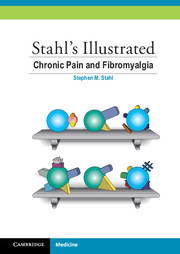Chapter 3 - The “Pain Patient”
Published online by Cambridge University Press: 19 October 2021
Summary
Now that the reader is armed with some neurobiological knowledge of pain as presented in Chapter 2, Chapter 3 presents a realistic view of pain patients, rationalizing findings from clinical trials in which certain drugs have appeared less effective, possibly due at least in part to patient history. It is imperative to recognize a patient's complete history and to evaluate the patient holistically when addressing symptoms of pain. Pain can often be a symptom of a mood or anxiety disorder, and is often in fact the chief presenting complaint for these disorders. Pain disorders can arise as comorbidities of other disorders, or can disguise another disorder altogether. A major goal in the effective treatment of pain is to catch disorders early, which can often prevent or reduce the need for opiates and increase the likelihood of restoration of function and an overall positive outcome.
These descriptive terms are useful for the clinician, however, as some words like “shooting” or “electrical” might lend themselves to describing trigeminal neuralgia (see Figure 4.17) whereas other words like “burning” or “aching” might lend themselves to describing fibromyalgia, chronic widespread pain, or complex regional pain syndrome (see Figures 4.1, 4.11, and 4.13). Additionally, some drugs have been found to treat optimally only certain descriptive types of pain.
The physical examination generally includes palpation of the affected painful and surrounding areas, as well as basic vital signs such as blood pressure, heart rate, respiration rate, and BMI (body mass index). The physical examination is critical in discerning whether pain is nociceptive or neuropathic in origin. Factors placing patients at increased risk of developing a neuropathic pain disorder include being overweight or obese, smoking, sedentary lifestyle, arthritis, and the presence of other psychiatric disorders.
Shown here is a simplified schematic of the potential time course of pharmacology in a patient with chronic pain. On the far left, greater doses of opiates become necessary as pain re-occurs. On the far right, an antidepressant is shown as having efficacy for pain in the absence of opiates. In the middle, however, an antidepressant is added after effective use of an opiate, and shows little to no added pain relief.
This trend is problematic given the progressive nature of neuropathic pain disorders.
- Type
- Chapter
- Information
- Stahl's Illustrated Chronic Pain and Fibromyalgia , pp. 47 - 56Publisher: Cambridge University PressPrint publication year: 2009

